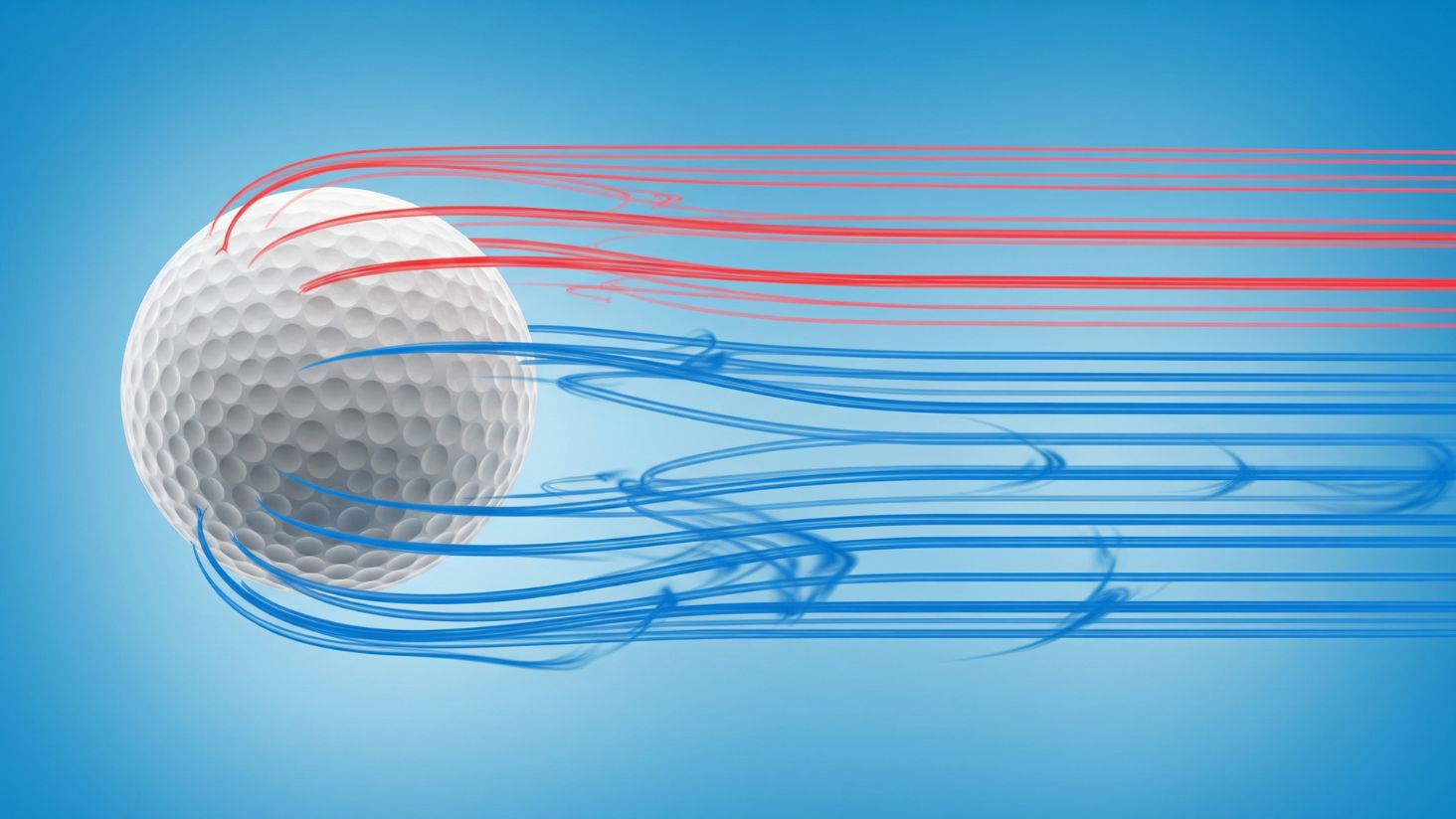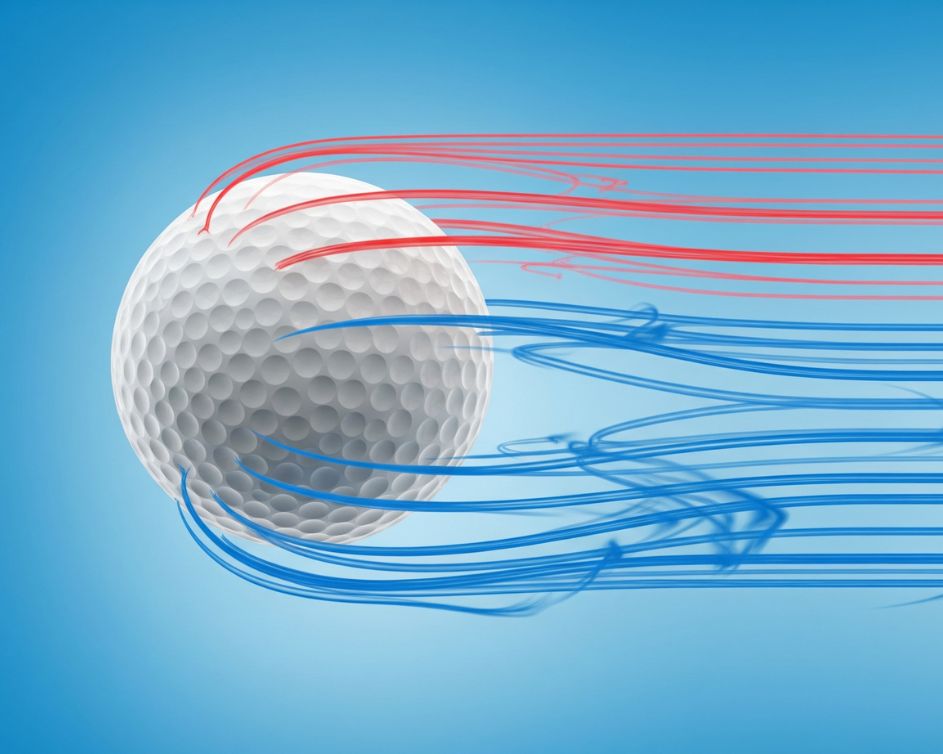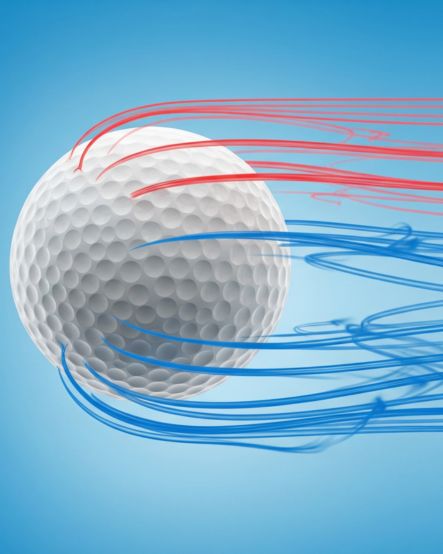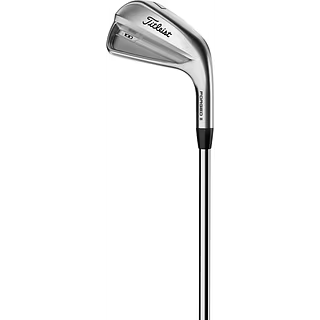


Little helpers: How dimples influence the golf balls in flight
Every golf ball has hundreds of dimples. But how would a golf ball fly if there were no dimples? The fun of golf would be over.
Every golfer and every golfer knows the picture: a golf ball is covered in countless small indentations. We take them for granted, but who really knows their name? We're talking about dimples, those inconspicuous dents that cover the entire surface of a golf ball. They are not there to hide the ball even better in the Rough, but fulfill a highly complex and crucial task. But what would happen if a golf ball was smooth, without any dimples? The result would be devastating for our beloved game.
The discovery of dimples: A historical anecdote
The history of dimples is more fascinating than you might think. Original golf balls, such as the so-called gutta-percha balls, were still completely smooth. But over time, ambitious golfers made a remarkable observation: their used balls, which had already been through a few rounds and were marked by all kinds of blemishes and dents, flew surprisingly further than the flawless, smooth new balls.
This realization quickly caught on. Resourceful players began to deliberately work on their new balls to give them the desired "quirks". Manufacturers reacted to this and began to systematically add the now familiar, regularly arranged dimples to their products. What began as a chance observation revolutionized golf ball construction.
Find the right golf balls for your game.
The science of dimples: The secret of flight
The physics behind the effect of dimples is complex, but can be reduced to the essentials. A golf ball has to overcome two major challenges in the air: air resistance (drag) and gravity. The dimples are the ingenious helpers that come into play here:
- Drag reduction: imagine the air flowing around a smooth ball - it would quickly separate and create a large vortex behind the ball. The result would be enormous air resistance, which would slow the ball down considerably. The dimples, on the other hand, create a thin, turbulent layer of air directly on the surface of the ball. This "turbulent boundary layer" ensures that the airflow stays on the ball for longer and only separates much later. As a result, the vortex behind the ball is significantly smaller and the air resistance is drastically reduced.
- The consequence: without this reduction in drag, a golf ball would lose about half of its usual flight distance.
- Generation of lift through backspin: When hit, the ball not only moves forwards, but also backwards (backspin) due to the clubface and the angle of impact. This spin causes the air above the ball (in the direction of spin) to move faster than under the ball. According to the principle of the Bernoulli effect, a faster flow leads to lower pressure. The pressure acting on the ball is therefore lower at the top than at the bottom, which "pushes" the ball slightly upwards - giving it lift. We are also familiar with this principle from the Slice in tennis or the lift on airplane wings.
- The consequence: without dimples, the lift generated by backspin would be minimal or non-existent and the ball would hardly be able to maintain its trajectory.
- Lateral rotation and trajectory: Lateral rotation, which can occur at the point of impact, is also responsible for the direction of the ball's flight. It should be noted here that too much spin can also mean too much lateral rotation if the ball is not hit optimally, which quickly makes the ball's flight curve unpredictable.
What would a smooth golf ball do?
The demonstration of the effect of dimples is impressive. A smooth golf ball would fly significantly less distance compared to a dimpled ball. Its trajectory would be extremely low and unstable, and it would hardly be able to maintain its direction. It would quickly lose height and fall to the ground.
An illustrative experiment, as demonstrated by golf ball manufacturers such as Titleist : A ball that only has dimples on one half and is smooth on the other half exhibits extremely unusual flight characteristics. If this ball is set up in such a way that the dimpled half points to the left while the right half is smooth, the ball is literally pushed to the right by the pressure difference - resulting in an extreme flight curve. With all its dimples, the ball would have flown dead straight, as if hit by a golf robot.
The variety of dimples: Numbers, shapes, depths
The development of dimples is a science in itself. To this day, intensive research is being carried out into the optimum number, shape and depth of the small dimples.
- Number: Balls permitted in official tournaments usually have between 320 and 480 dimples. However, there are also models with over 500 dimples, such as the Mizuno JPX.
- Shape and depth: Usually the dimples are round, but some manufacturers are also experimenting with polygonal shapes in the hope of achieving even better aerodynamic properties. The exact configuration is often a closely guarded secret of the manufacturers, who are constantly optimizing their designs.
The small dimples - indispensable for modern golf
The dimples are a prime example of how inconspicuous details can have an immense effect. They are the key to the flight characteristics of modern golf balls and are crucial for their distance, control and stability. Without these small dimples, golf as we know and love it would simply not be playable.




Release date
11 Aug 2025
photos
The air flows above and below the golf ball are at different speeds due to the dimples, which is why it is buoyant. (Image: AI generated)



